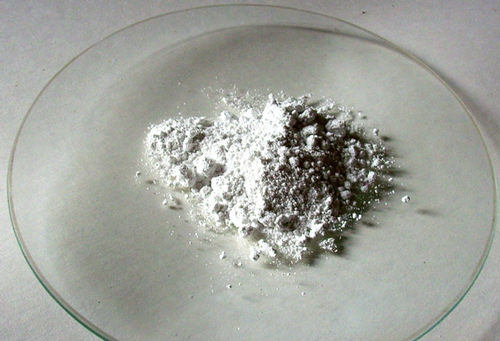Europe Considers Carcinogen Label for TiO2
WEDNESDAY, JUNE 14, 2017
European regulators have taken another step toward classifying titanium dioxide as a substance “suspected of causing cancer,” drawing criticism from some in the coatings industry who say the classification is not warranted.
The European Chemicals Agency’s Committee for Risk Assessment (RAC) announced June 9 that it concluded that TiO2, a substance commonly used in paints, construction materials and other industrial and consumer goods, meets the criteria to be classified as a suspected cause of cancer via inhalation, under Category 2.

 |
| Ondrej Mangl, public domain, via Wikimedia Commons |
|
European regulators are considering Category 2 carcinogen classification for titanium dioxide, a white inorganic substance that occurs naturally in several kinds of rock and mineral sands and is used in the manufacture of some paints and coatings as well as consumer goods. |
The RAC’s advisory opinion will be submitted to the European Commission, the executive arm of the European Union, which has the power to regulate chemicals within the EU. The European Commission can accept or reject the recommendation of the RAC.
French Dossier
Last year, France submitted a dossier recommending cancer labeling for TiO2. At the time, French regulators argued that the substance is likely a Category 1B carcinogen, meaning it is known to cause cancer in humans. The French regulatory body ANSES sought “harmonized classification” for the substance across the entire EU.
The RAC’s recommendation that it be classed in Category 2 means the body believes TiO2 is a suspected carcinogen and should be treated as if it causes cancer, but stops short of calling the substance a known carcinogen.
TiO2, a white inorganic substance, occurs naturally in several kinds of rock and mineral sands and has been used in many products for decades. It can be manufactured for use as a pigment or as a nanomaterial.
Coatings Industry Response
The American Coatings Association issued a statement Monday (June 12) asserting that the recommendation is unfounded. “There is considerable industry concern that the basis for the opinion is flawed and does not inform on risk to humans,” the statement reads. “It is important to consider that the risks profiled are not attributable formulated products, like paint, where TiO2 dust is embedded in the mixture.”
In the coatings industry, TiO2 is most notably used as a white pigment, in industrial and protective coatings as well as architectural paints. The ACA has repeatedly expressed concerns that all paint products containing the substance could be labeled as carcinogens under the EU’s classification system.
 |
| © iStock.com / 4x-images |
|
In the coatings industry, TiO2 is most notably used as a white pigment, in industrial and protective coatings as well as architectural paints. |
The Titanium Dioxide Manufacturers Association, which represents the TiO2 industry, issued a statement expressing its disappointment in the recommendation.
“The scientific evidence is clear: There are no grounds for classifying TiO2 as carcinogenic for humans by inhalation,” said Robert Bird, chairman of the TDMA. “Also, classification would do nothing to increase the level of protection of human health and the environment, which is the whole point of the labelling and classification system.”
Cancer in Rats
According to ANSES, studies “demonstrate that titanium dioxide can cause malignant tumors in rats following exposure by inhalation. A sufficient level of evidence means that titanium dioxide can be considered as a proven carcinogen in animals in light of the experimental data. In humans, the carcinogenic nature continues to be discussed due to the methodological limitations of the available epidemiological studies.”
The TDMA argues that the data from tests done on rats cannot be extrapolated to humans.
“In the studies considered by the RAC, the effects observed were specific to the rat and have not been seen in scientific studies on any other species, including humans, as they relate to a mode of action that only occurs in rats,” the association said in its statement. “These effects in rats are only observed via inhalation at an exposure level many times higher than those encountered by workers on a daily basis.”
Tagged categories: American Coatings Association (ACA); Government; Health & Safety; Health and safety; Raw materials; Regulations; Titanium dioxide









